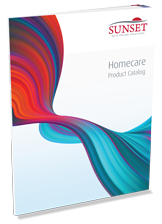With declining reimbursements, cash products are a great way to increase revenue while also providing your patients with convenient, easy-to-use cleaning products. This article describes the best products for cleaning CPAP equipment, as well as recommendations for cleaning schedules and techniques.
To prevent growth of mold and bacteria, regular cleaning is essential. However, this task can be tedious without the right supplies.
Daily Care
To remove dirt and oils and prevent buildup, clean the mask and cushion with a cleanser or wipe that is gentle enough for daily use. As a general rule, people can use any cleaning product on their mask that they would use on their face. Anything stronger with scents, alcohol, antibacterial agents or bleaching ingredients can cause the cushion to break down or irritate the skin.
Several products are designed specifically for CPAP masks with all-natural ingredients that are safe enough for daily use. One of the most popular brands is Citrus II, available in a dispenser with 62 wipes or a box of 12 individually wrapped wipes. Both options have their uses. The dispensers are compact. Many of our customers provide each of their respiratory therapists with a few dispensers of wipes, one to demonstrate to the patients how to clean their masks during the initial fitting and additional ones to sell. This helps show proper maintenance and can also lead to a cash sale on the spot.
The individually-wrapped wipes are great to give away as a sample with each new patient setup, and are useful for patient travel or in-store promotions.
If your patients prefer to use a spray, Citrus II offers CPAP Mask Cleaner Spray in either 8-ounce or 1.5-ounce travel size bottles.
In addition to wiping down the mask, instruct your patients to empty the humidifier chamber each morning and leave it open to air dry for the day. They can refill it with distilled water at night. Avoid using tap water to prevent mineral buildup in the chamber that could damage the machine.
Weekly Care
Clean all equipment on a weekly basis, or more frequently if the patient is recovering from illness. First detach the mask from the tube and remove the headgear and cushions. Soak the headgear, tube, mask, humidifier chamber, reusable foam filter, chinstrap and any connectors or adapters in a 50/50 solution of warm water and Citrus II CPAP Concentrated Cleanser for 10-20 minutes.
After soaking, rinse thoroughly with warm water. For best results, hang the tube, headgear and chinstraps to allow them to dry completely. The mask, cushions, chamber and filter can be left out on a towel to dry. Ensure the filter is fully dry before placing it back into the machine. If your patient lives in a wet or humid climate and they have trouble getting their tube and mask to dry fully, Hurricane makes a Home Edition CPAP Equipment Dryer that safely dries products without damage. However, make sure patients are aware that they should not machine wash or dry headgear or chinstrap as it will damage the material or affect the size.
To clean the machine, make sure it is unplugged, and wipe it with a cloth soaked in warm water or a mix of warm water and CPAP Concentrated Cleanser.
With filters, a good rule of thumb is: If it is foam or labeled as reusable, it can be washed weekly and reused for six months, per Medicare guidelines. If it is labeled as ultrafine or disposable, it cannot be washed and must be thrown out and replaced every two weeks. Washing a disposable filter will cause it to lose shape and effectiveness. Some machines use only disposable filters while others can accommodate reusable foam filters, as well as disposable ones. Check with the manufacturer, and explain the difference to your patients to avoid confusion.
During the weekly washing, patients can substitute vinegar, unscented liquid dish soap or hand soap in place of the CPAP Concentrated Cleanser, but they should not use rubbing alcohol, bleach, scented soaps or antibacterial soaps as they can break down the equipment.
Effective Display
How do you encourage patients to clean their products regularly? First, inform them of the health implications of inhaling mold and bacteria growing in their equipment. Also, make the cleaning products easily accessible, and start them off on the right foot with samples or cleaning demonstrations during setup. To assist in this, one product is the CPAP Cleaning Product Display Kit, which is a full display of all the most popular CPAP cleaning products in a tabletop format. The display signage spells out the features and benefits of the cleaners. It displays well next to the register to encourage cash purchases.





